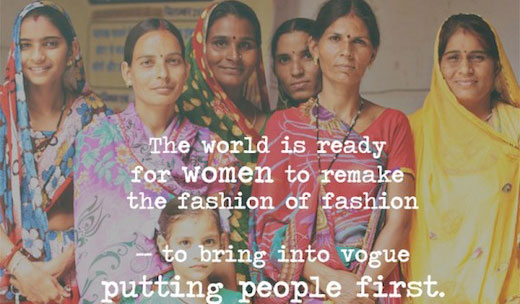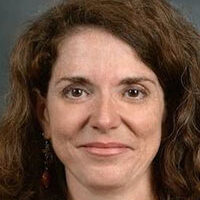
This week marks the one-year anniversary of the worst disaster in clothing industry history. On April 24 last year an eight-story building in Bangladesh collapsed killing 1,129 garment workers. Months before 112 garment workers in Bangladesh perished in a factory fire. They were sewing clothes that had been ordered by big name stores like Walmart.
More than 95 percent of apparel sold in the United States is produced abroad, according to Chicago Fair Trade, a coalition of more than 70 organizations. The coalition is lobbying Chicago’s City Council to make the city a “sweatfree community.” The coalition opposes taxpayer dollars going to buy “items produced in poverty wages and inhumane work conditions.”
The New York Times reported last year that the federal government spent more than $1.5 billion on clothing made in factories that had violated local labor laws, including in Bangladesh. Violations included “padlocked fire exits, buildings at risk of collapse, falsified wage records and repeated hand punctures from sewing needles when workers were pushed to hurry up.”
The tragedy in Bangladesh opened people’s eyes and started them thinking about purchasing a “fair trade wardrobe,” according to Jonit Bookheim, who sits on the board of Chicago Fair Trade. Bookheim is also marketing director for Chicago-based Mata Traders, which specializes in “fair trade fashion.”
One visit to Mata’s website and you begin to understand the important differences between “fair trade” and “free trade.” Mata’s blog, “Fair Trade Stories,” details the relationships Bookheim and her partners have built with the women artisans who produce Mata’s unique clothing line. Harshali and Surita Auntie are two women in one of the many cooperatives based in India and Nepal from which Mata imports.
Bookheim says the partners personally know all the women who make Mata’s products. “We see them throughout the years,” she says. “Harshali just had a baby. On one visit, I got to see where she lives. Literally in one small room three of them – Harshali, her brother and sister – slept there. They had a little aquarium with a turtle. They would roll up their mats after they slept,” she recounted.
“One of the most amazing things we do is stay connected to the women in the cooperative. It is not like one and done,” Bookheim said in a recent interview.
Bookheim recognizes the retail outlets and labels that have taken serious steps to know their supply chain producers and audit their practices. But Mata, as a member of the Fair Trade Federation, follows a more stringent code of business practices, she said. One principle is building long-term relationships, Bookheim explained. “You don’t start a business relationship without the intention of it being long term,” she said.
Bookheim explained the difference between Mata and other companies: “Most companies don’t know who’s producing. They have contractors and contractors of contractors and have never been” in the country where their garments have been produced. With fair trade, companies use the trading relationship to end poverty through transparency and equitable relationships, she said.
The ultimate goal of the fair trade movement is not to make products but to “empower women in poor communities,” Bookheim said.
The women who work at the coops that Mata works with get more than a job and the paycheck that goes with it. Bookheim said the co-op provides support with health care, childcare and maternity leave. “If a woman needs help opening a bank account or if they are in a domestic violence situation,” there is a ready-made support network.
“A lot of women can’t read or write, so there are literacy classes,” she said. Women have savings programs allowing their members to borrow money and not get into a difficult situation with shady loan sharks, Bookheim said. These coop organizations and fair trade businesses help break the cycle of poverty in sustainable and real ways, she said.
Mata founder Maureen Dunn started the business after she, Bookheim and Michelle King Thomas, best friends from college, took a yearlong trip around the world in 2003. They “loved being immersed in other cultures,” Dunn said.
The trip “opened our eyes to the world. But it also opened our eyes to the extreme poverty,” Bookheim said. They spent four months in India. Dunn became captivated with the textiles there. After saving up money, Dunn went back and bought tapestries, leather sandals and the like to sell here. Dunn and her friends set up home shows and traveled to Martha’s Vineyard to sell the items. Customers began to ask if the items were fair trade. That’s how Mata was born. Officially started in 2007, Mata boasts 35 percent growth every year.
“People are learning more about fair trade. You see more fair trade products in major stores now,” Bookheim said, adding that Americans can “vote” with their dollars for a better world.
Chicagoans will join pro-labor fashionistas across the globe in declaring April 24 “Fashion Revolution Day,” calling on the public to wear clothes inside out to remember the garment workers who died and to help others think about where their wardrobe comes from.
Photo: via Mata Traders blog.












Comments